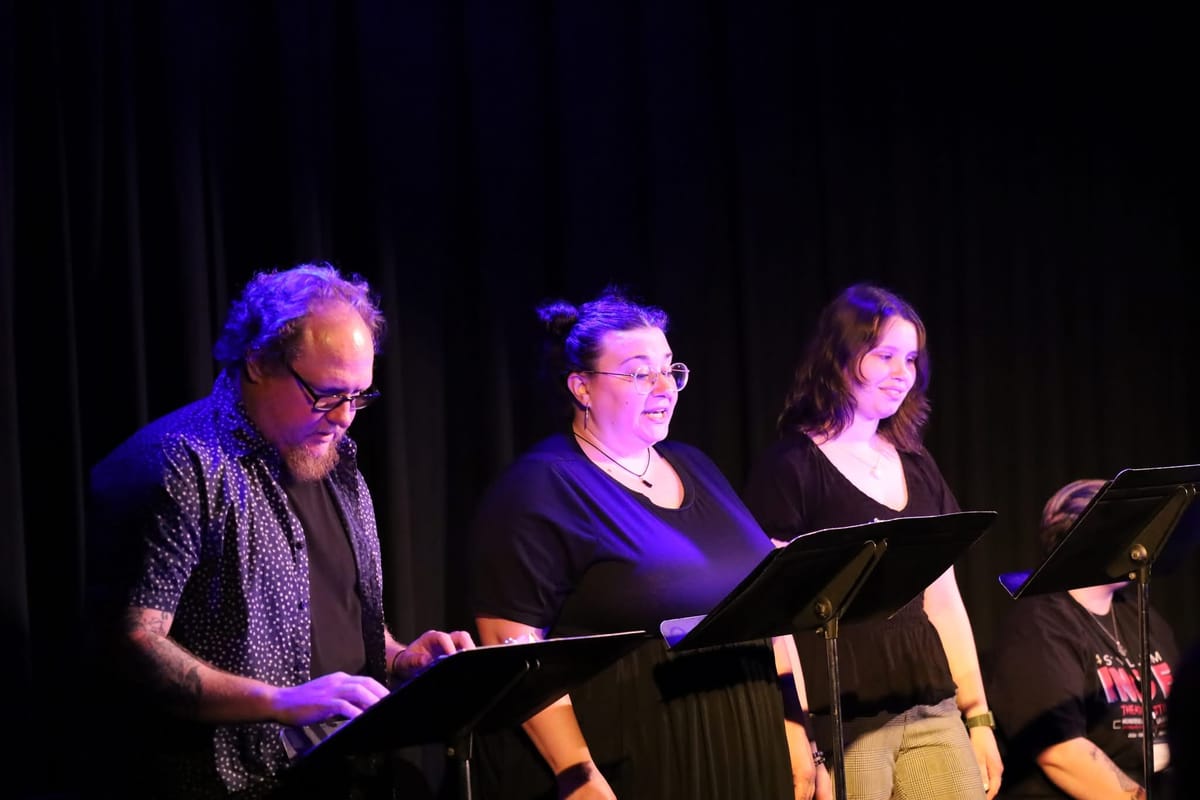Art in three dimensions: ‘Topeka Competition 34’ at the Topeka & Shawnee County Public Library
Artist Mona Cliff selected the 3D works in this iteration of the annual competition, on view at the Sabatini Gallery through May 11.
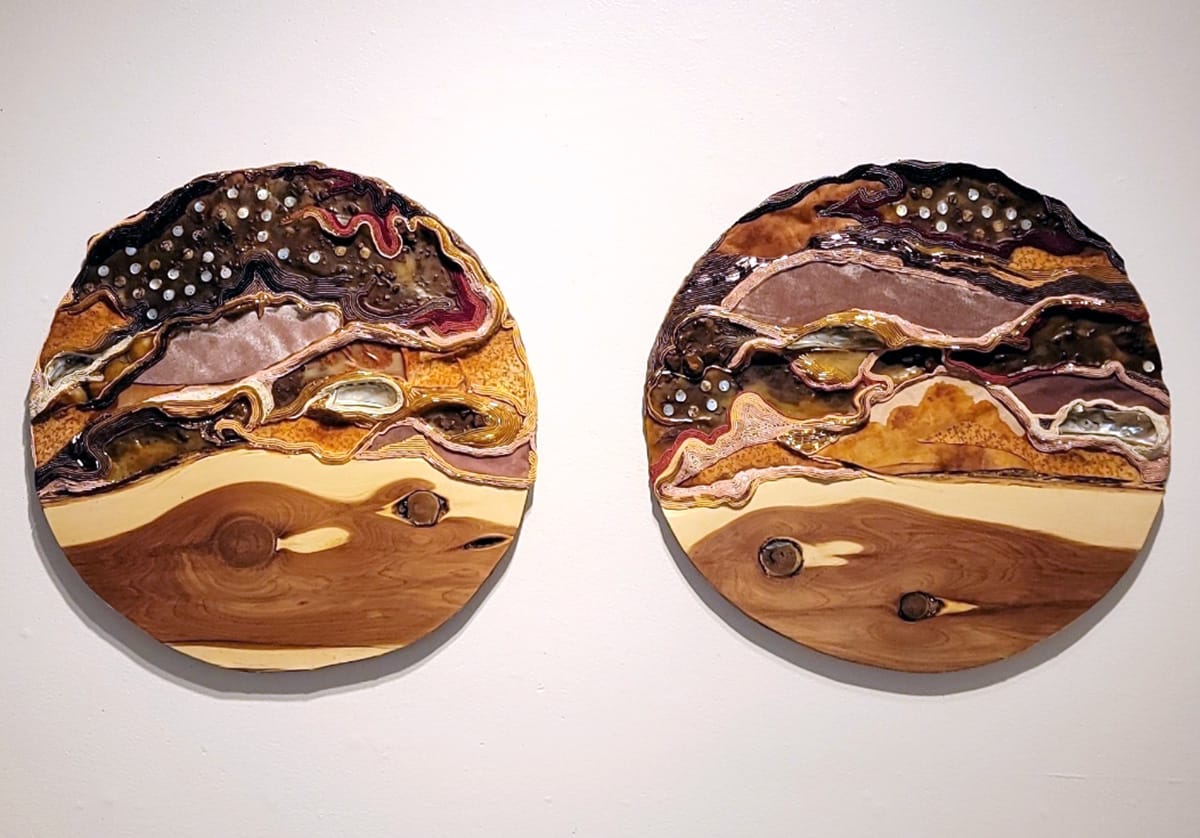
Most people are familiar with the universal rule of viewing art in museums and galleries: look, but don’t touch. It can make art seem out of reach for the viewer, divorced from everyday life, or even boring, especially for young children. Although it’s important to preserve the integrity of art pieces, the enforced separation is unfortunate, since tactile exploration is a natural way to experience and understand new objects, materials, or processes.
“Topeka Competition 34” remedies this and breaks down the walls between the viewer and the artwork by inviting visitors to not just think about art, but to feel it as well. Alongside several of the diverse, three-dimensional pieces on display at the 34th “Topeka Competition” are samples of the materials the artist used to construct their works. This allows for the pieces to be actively experienced rather than simply viewed. Beads, sequins, electrical cords, and shredded paper are some of the items provided for tactile reference.
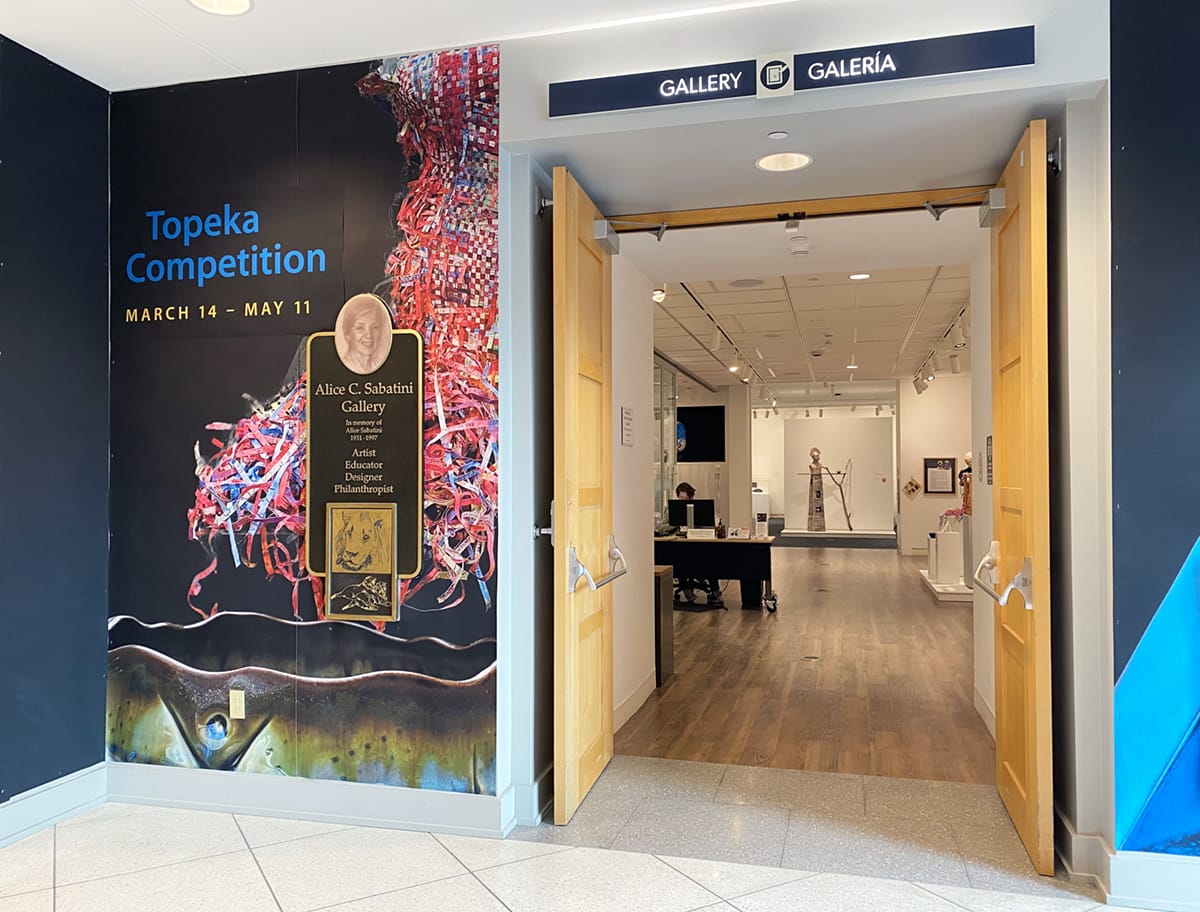
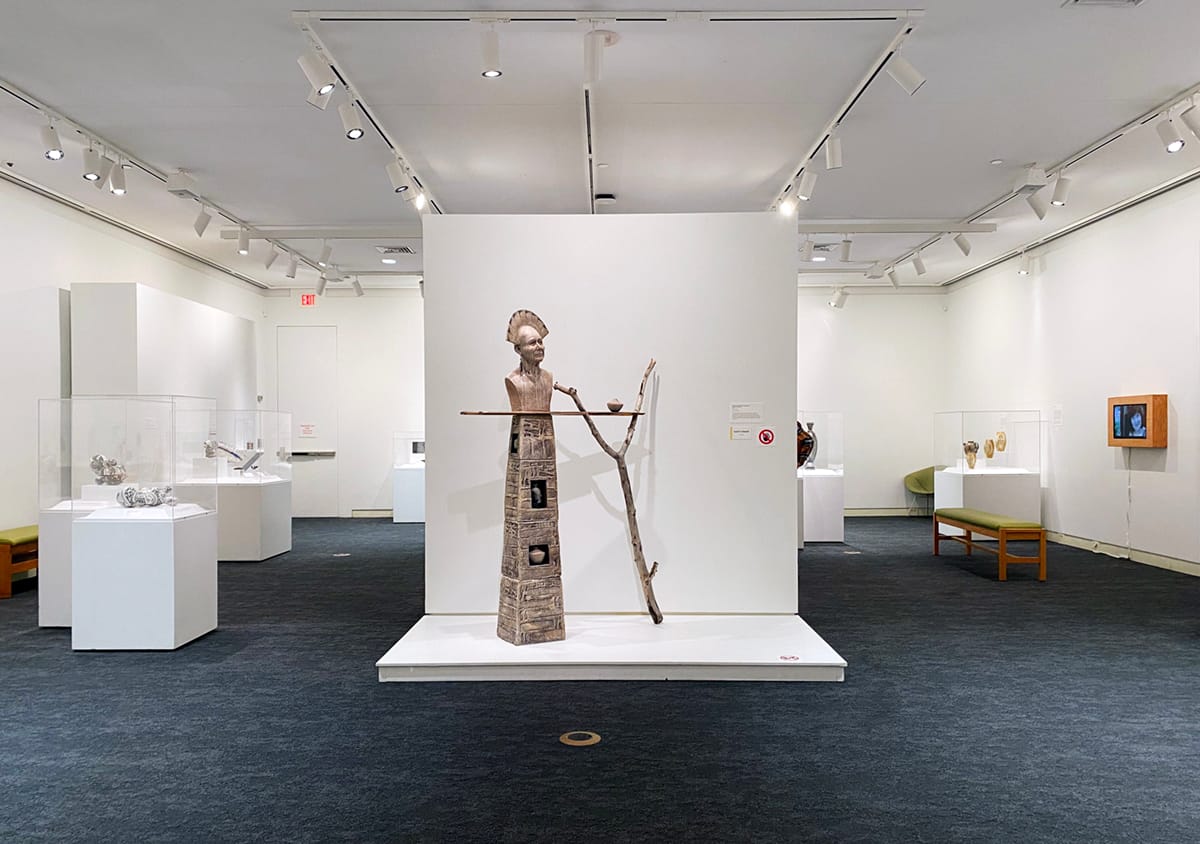
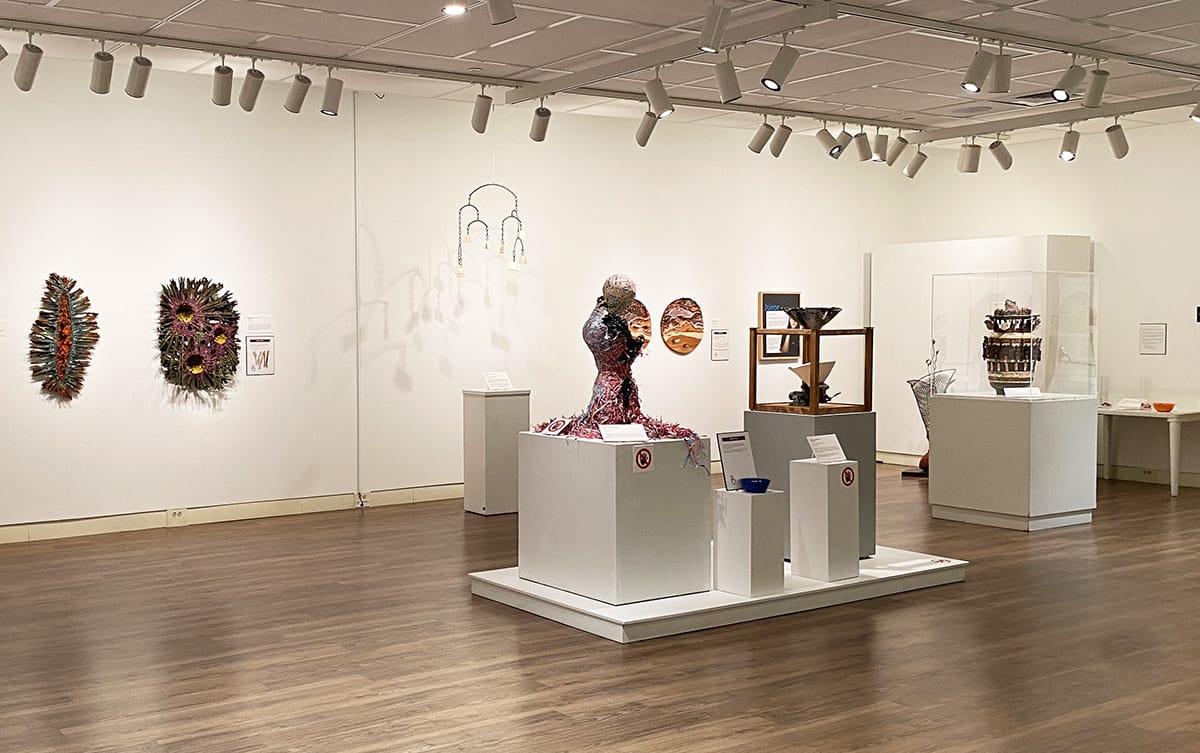
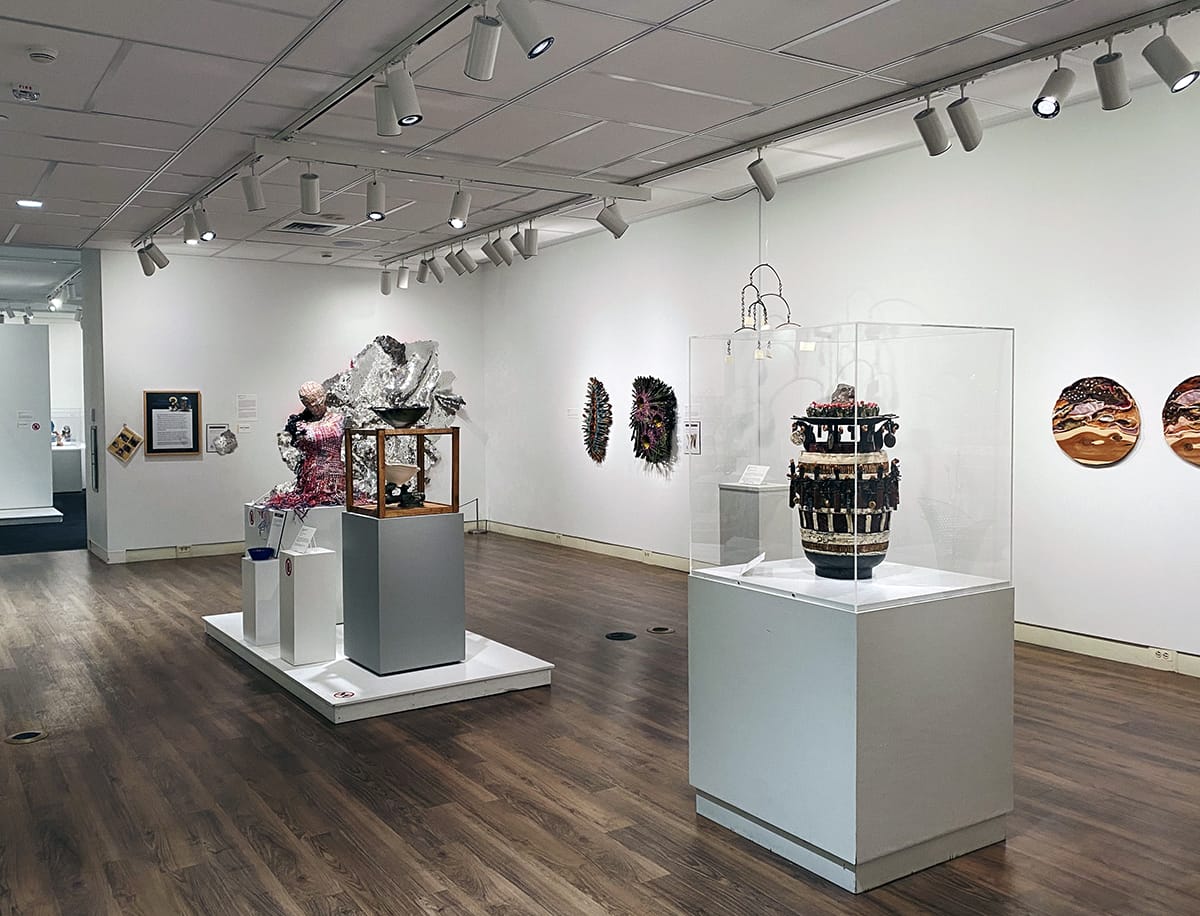
Installation views from “Topeka Competition 34” at Alice C. Sabatini Gallery in the Topeka & Shawnee County Public Library. Photos by Abby Bayani-Heitzman for the SHOUT
The sculptures and other works featured in the “Topeka Competition” were selected by multidisciplinary visual artist Mona Cliff (A'aninin/Nakota Nations) of Lawrence, who served as the juror for this year’s competition. Cliff considered originality, artistic concept, and technical excellence when selecting pieces for the show and determining the Juror’s Awards.
In her own art, Cliff utilizes traditional Native crafting methods such as beadwork and fabric appliqué to explore contemporary Indigenous identity and culture. Her piece “Sediments/Sentiments” is included in the “Topeka Competition” exhibition. The two circular panels of cedar wood are embellished with beads, leather, resin, cloth, shells, and beeswax to resemble sediment strata in the earth. As sediment layers can reveal information about geological history and environmental changes, the two panels seem to invite the viewer to look into the past. Accompanying the piece are two different samples of strung beads to touch.
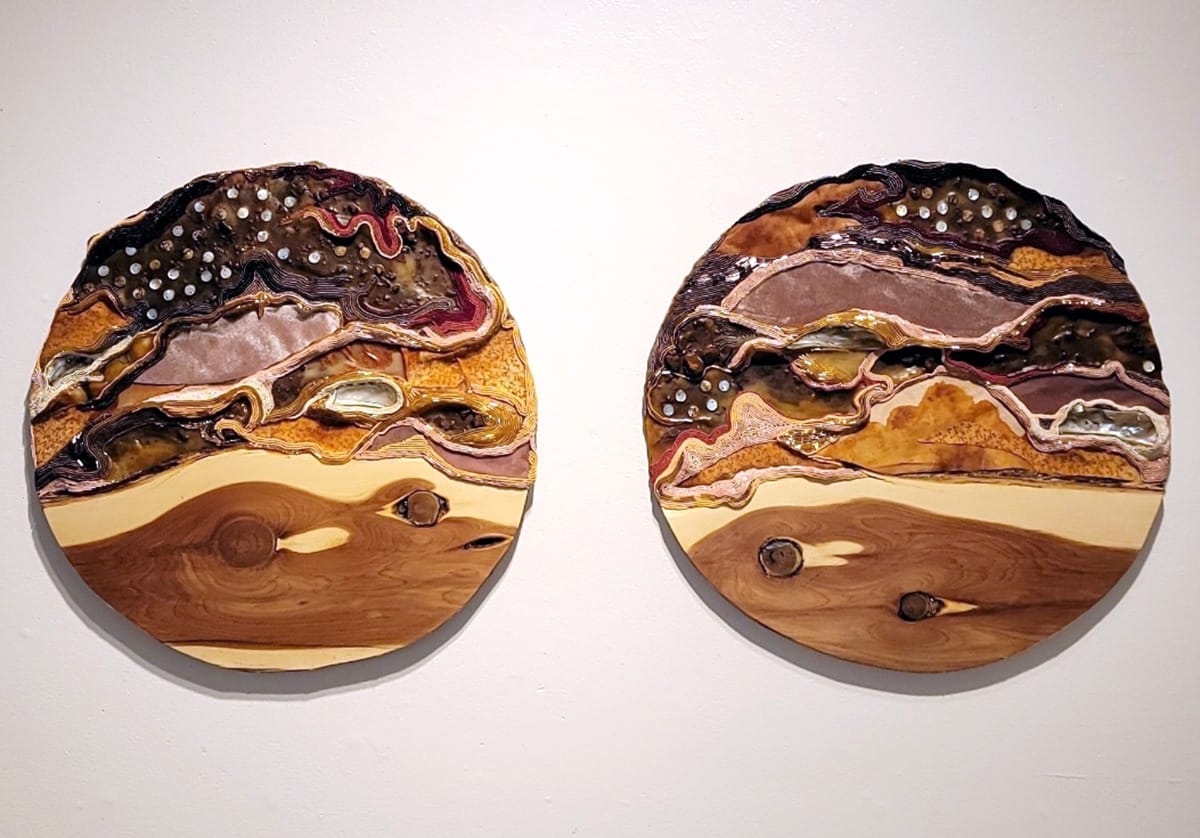
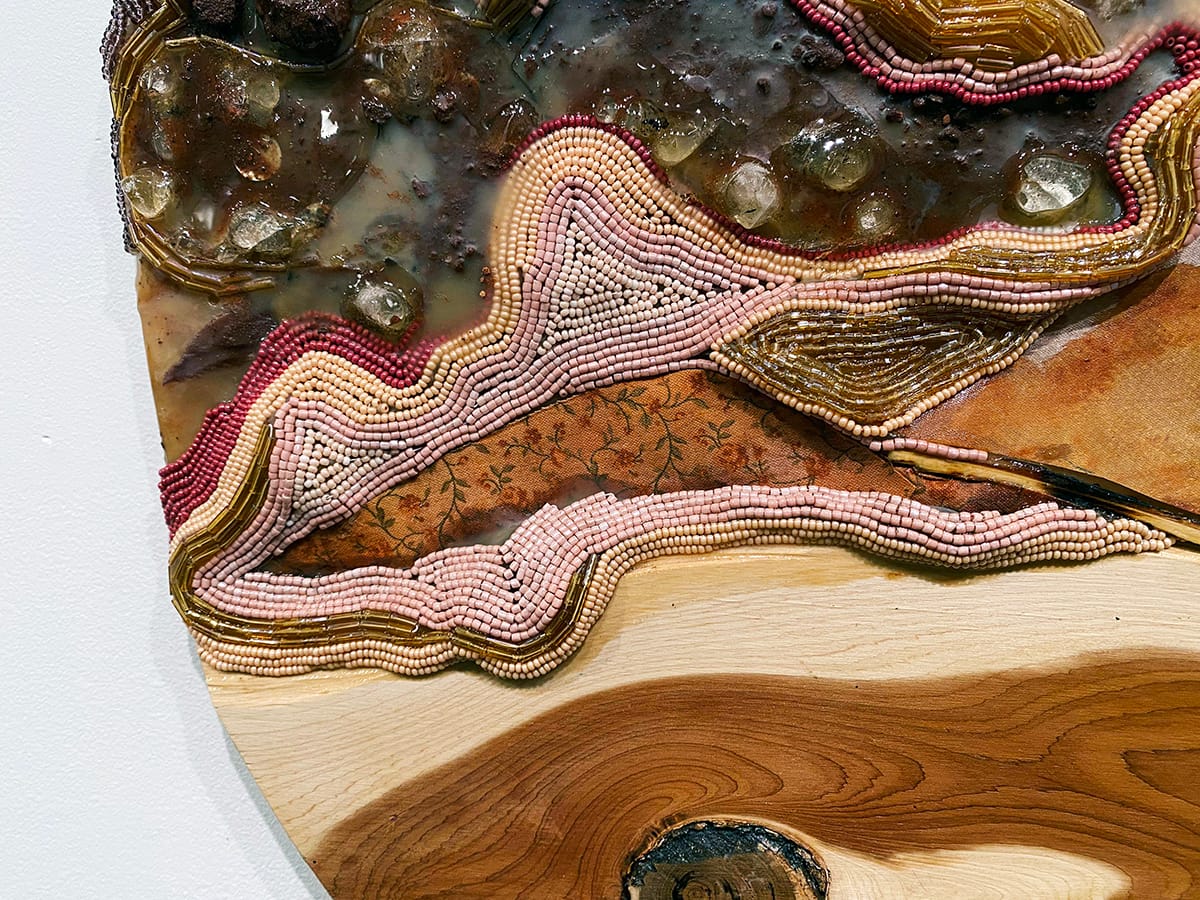
Mona Cliff, “Sediments/Sentiments,” 2024, cedar wood, beads, beeswax, leather, resin, cloth, shell (photo courtesy of the artist); detail of "Sediments/Sentiments" (photo by Abby Bayani-Heitzman for the SHOUT).
Cliff awarded prizes to three pieces in the show and — although the competition is national in scope and features 32 artists from 11 states — each award-winner was a local Kansas artist.
Subscribe to our free email newsletters
Stay in the know about Wichita's arts and culture scene with our Sunday news digest and Thursday events rundown.
No spam. Unsubscribe anytime.
The First Prize was given to Kristin Morland of Lawrence for her sculpture “B1-2C-1,” composed of interconnected silver sequins, beads, thread, and felt. In her artist statement Morland explains that the piece is both a “mirror” to reveal and a “blanket” to conceal: “My intention is to inspire the viewer to see their connection to every aspect of our world, a mirror to the is-ness of the moment.” A sample of sequins and beads mounted beside the sculpture reveal the surprising delicacy of the piece.
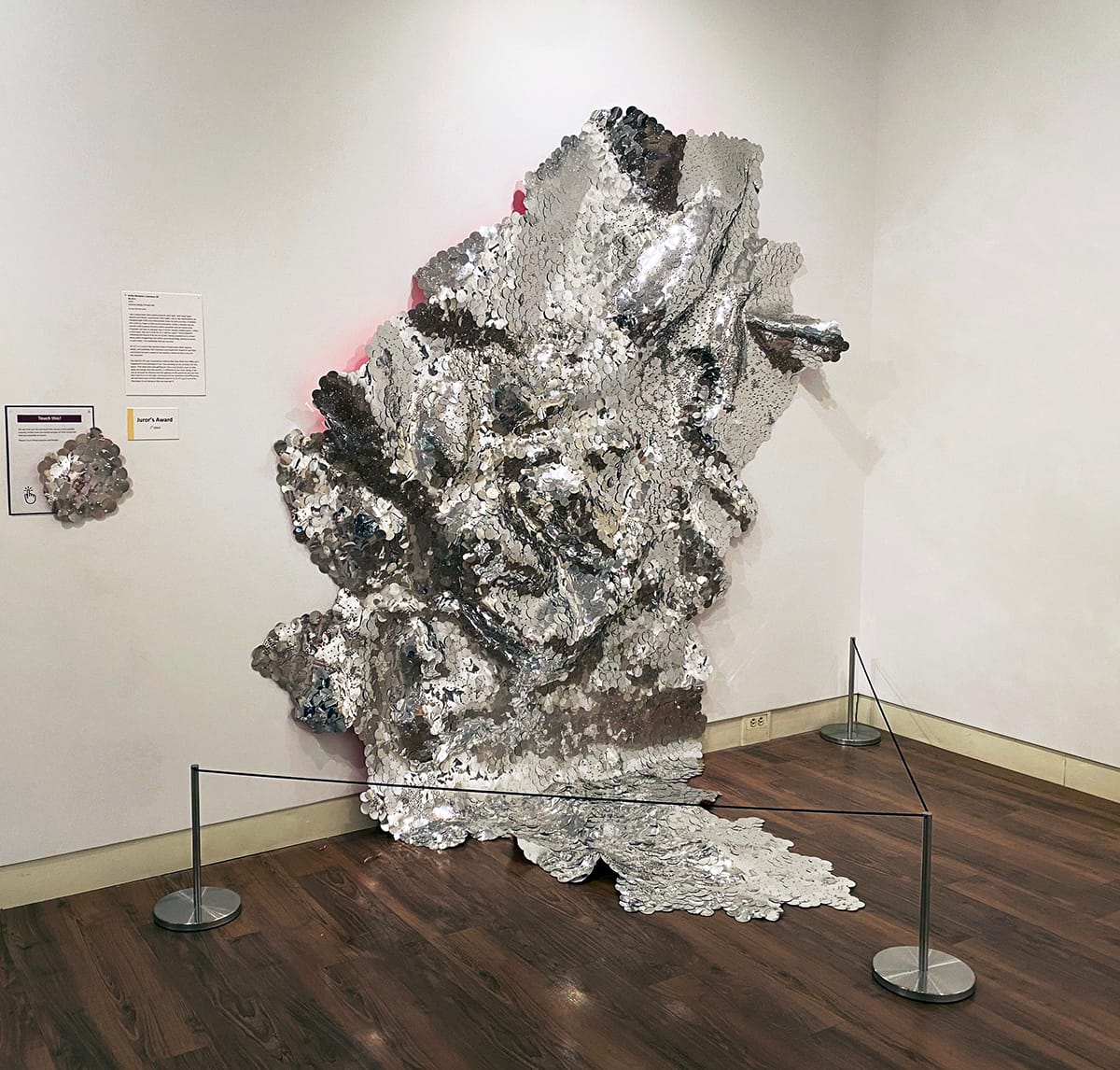
Michaela Valli Groeblacher of Lindsborg was awarded both Second and Third Prizes for her ceramic busts “Song for the Mimbres” and “The Reader.” The subjects of both sculptures are older adults, whom Groeblacher says embody the “essential psychological and spiritual aspects of a human’s vulnerability versus strength ... while exuding the beauty of experience.”
The look on the face of “Song for the Mimbres” is one of optimism and resilience; the wrinkles of age, headdress, and feathered earring emphasize the continuity of history and tradition, while the the figure’s bright, hopeful blue eyes seem to look toward the future and perhaps the next generations.
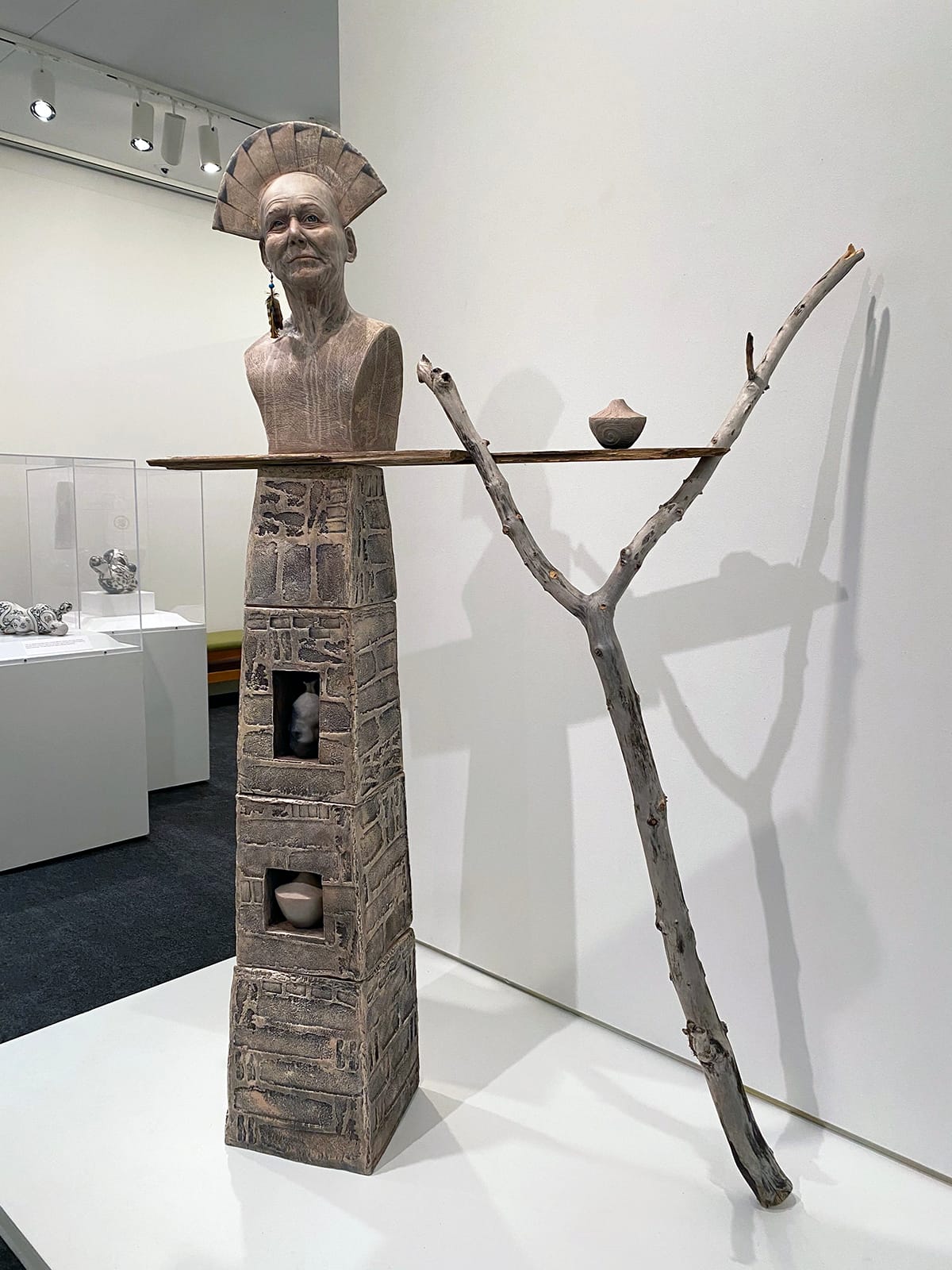
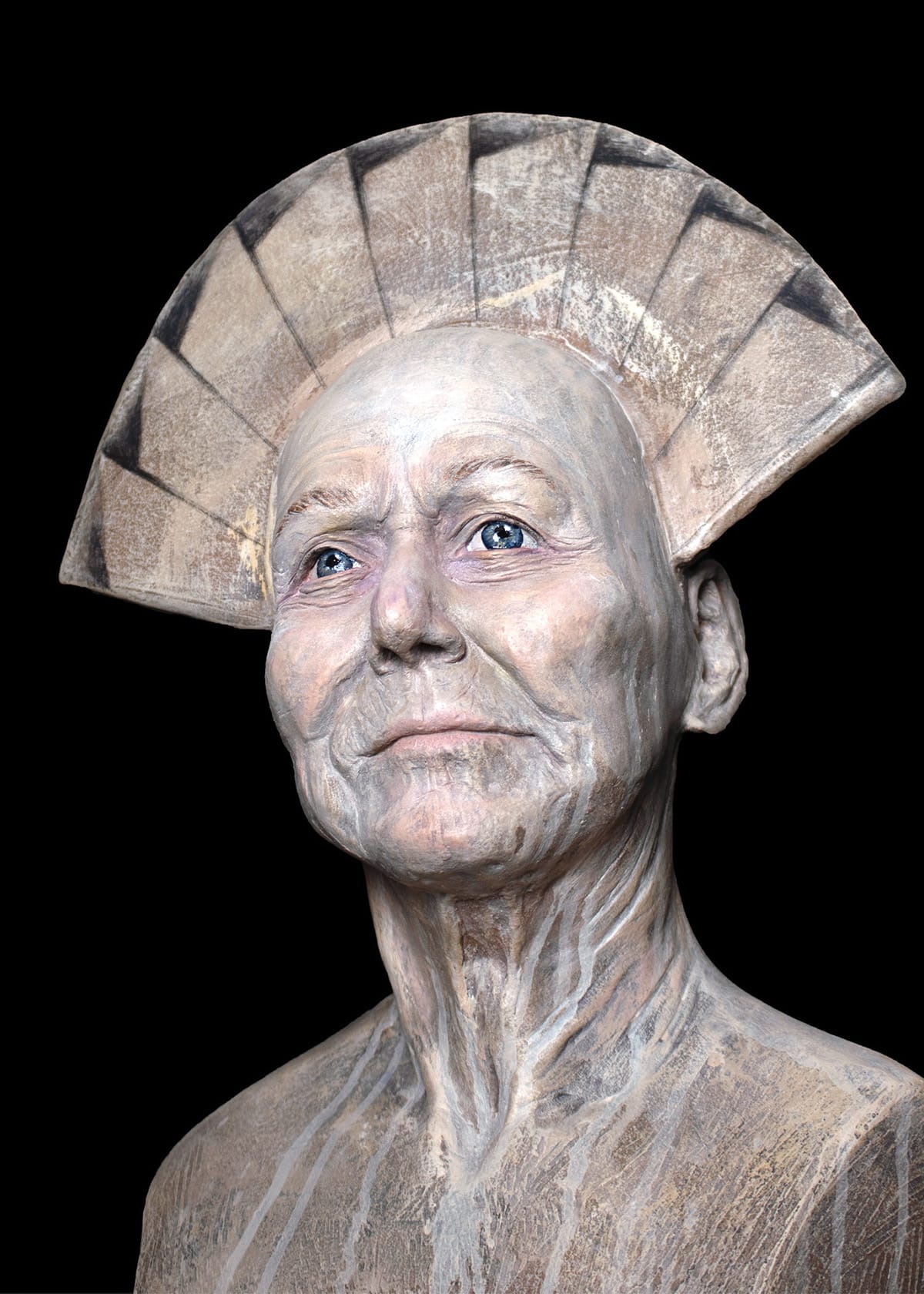
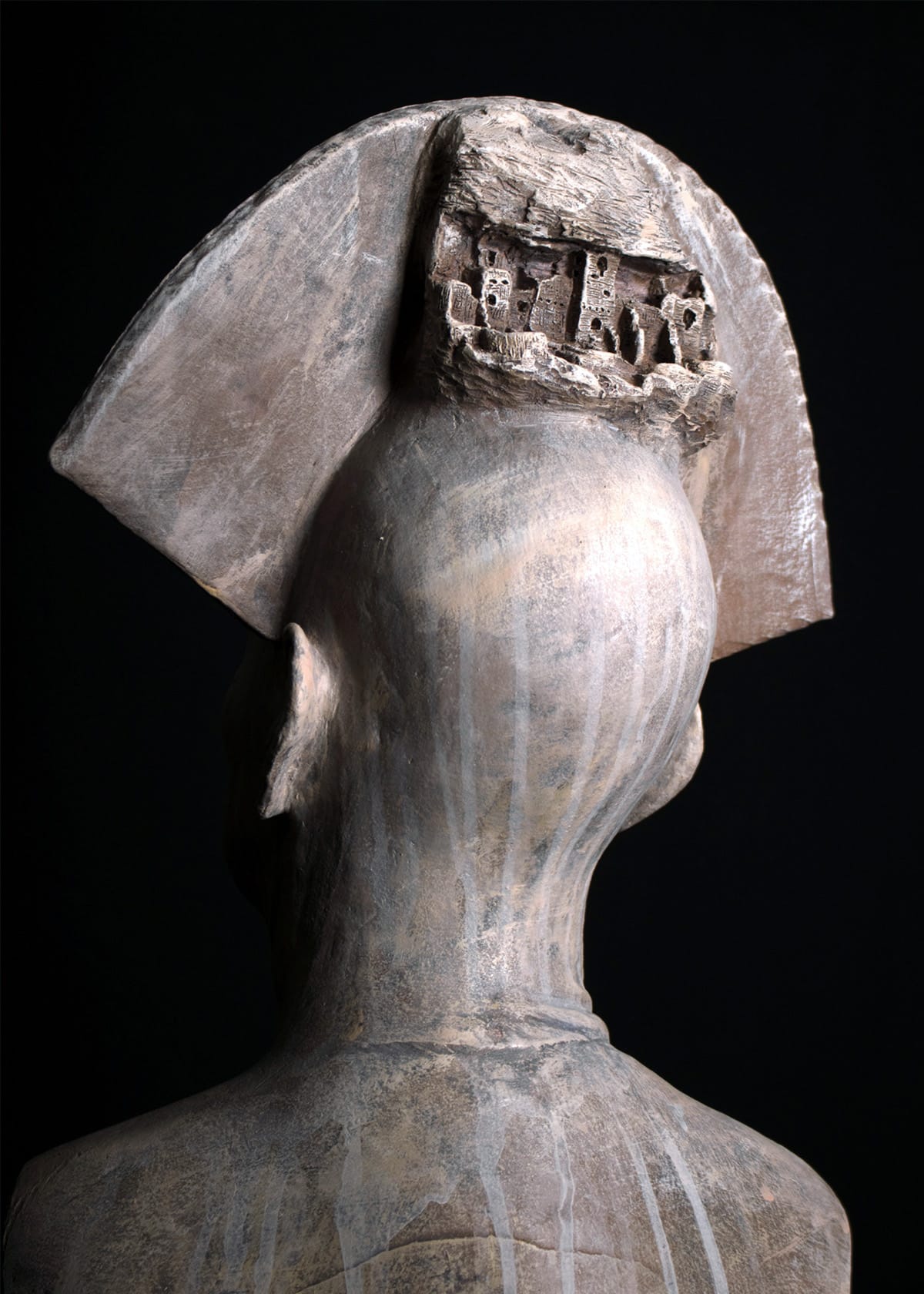
From left: Installation view of Michaela Valli Groeblacher, “Song for the Mimbres,” 2021, ceramic, paint (photo by Abby Bayani-Heitzman for the SHOUT); details of “Song for the Mimbres" (photos courtesy of the artist).
“The Reader,” in contrast, depicts an old person reflecting on their long life, gazing into a butterfly-shaped book with a small figure at the center — a representation of the Reader’s younger days when they were beautiful and full of life. However, the Reader doesn’t seem to be longing for the past but instead examines it with fondness, recognizing that, although they have grown and aged, they are still the same person. Like the pages of the book, the Reader’s wrinkles form layers, eventually morphing into larger pages at the base. The texture of the body changes from wrinkled skin to that of written text on a page, emphasizing that the Reader’s past experiences very much made them into the person they are today.
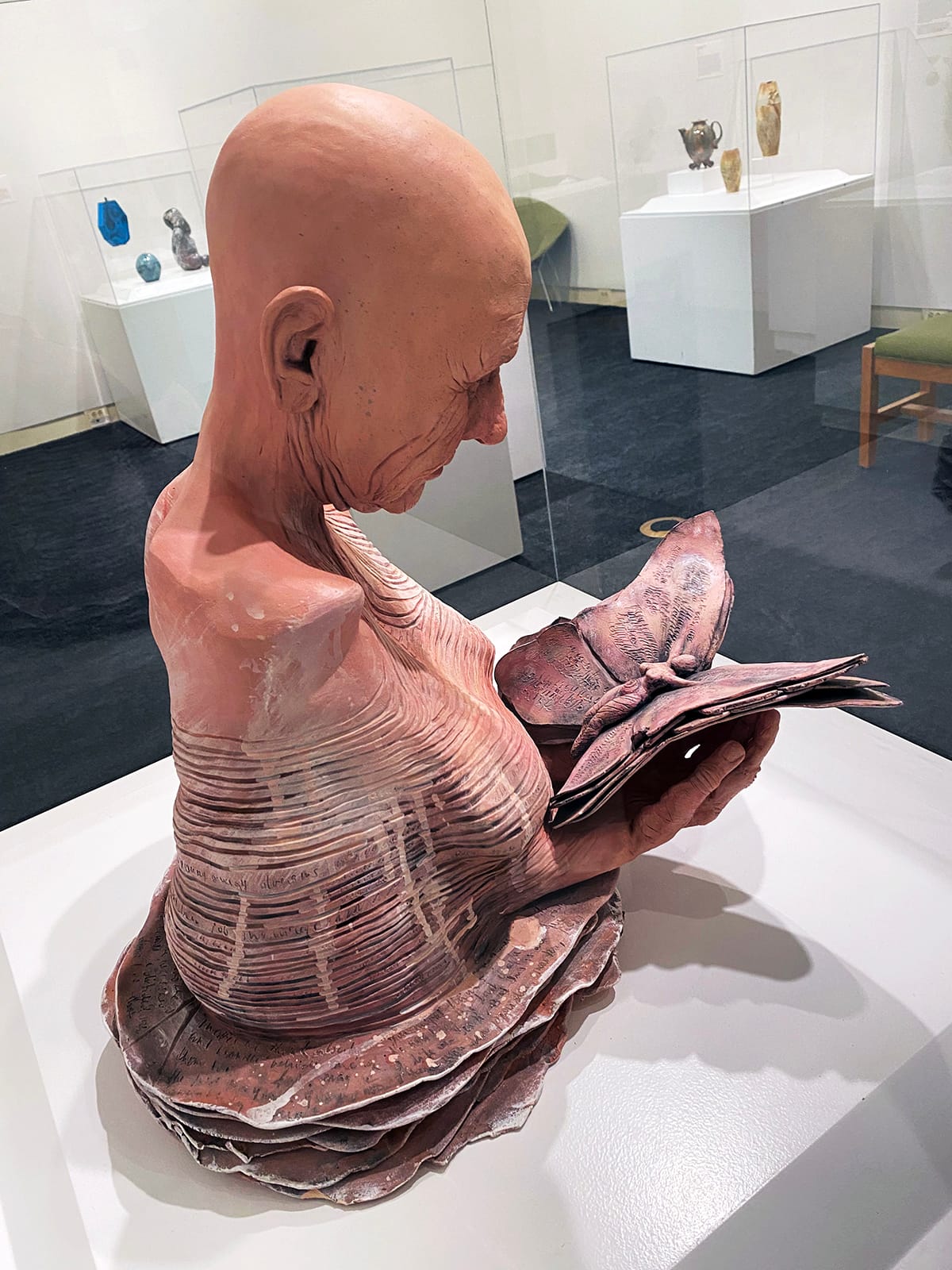
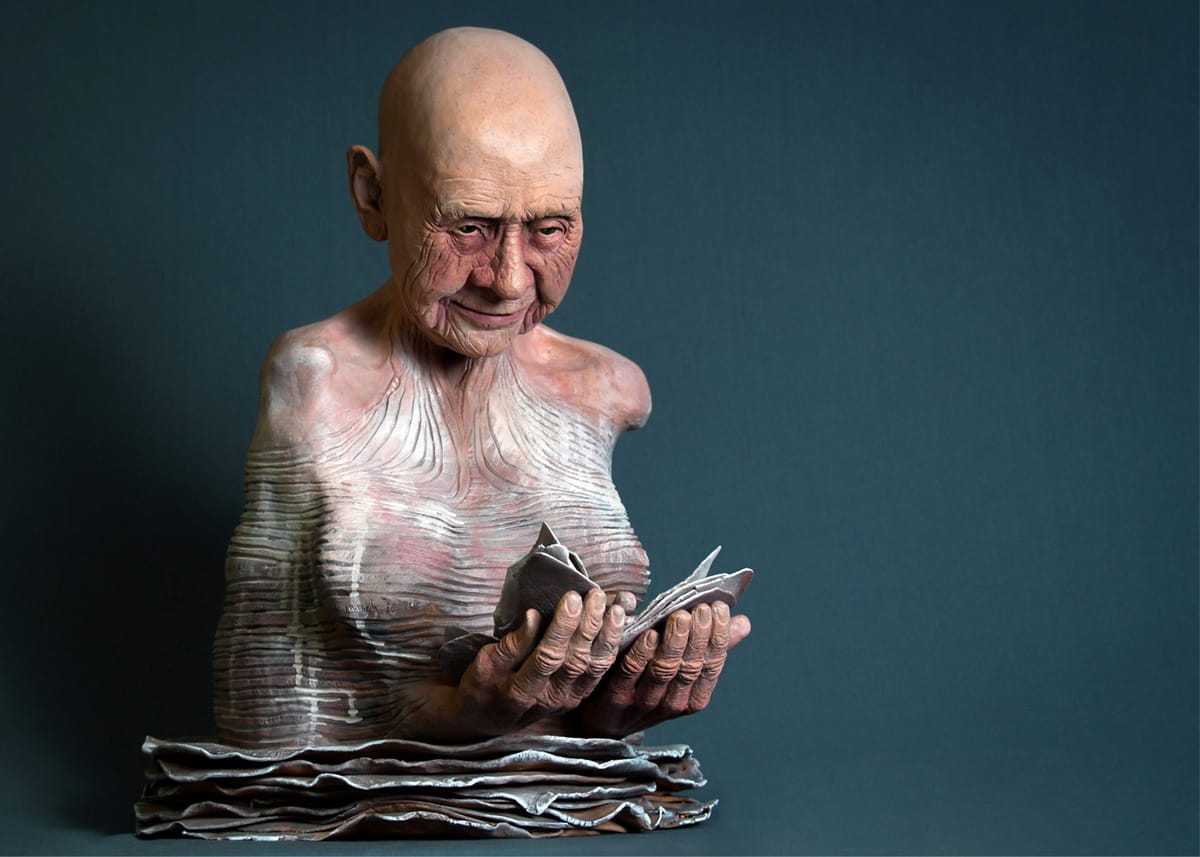
photo by Abby Bayani-Heitzman for the SHOUT
In addition to the award-winners, many of the pieces on display demonstrate a playful creativity that seeks beauty in what others may consider mundane or worthless.
“Crossed Wires” by Lisa LaRue-Baker of Topeka is one such work. Drawing on the design of a traditional Cherokee basket, the piece is composed of a wire fruit bowl and recycled wiring and connectors. In her artist statement she explains, “We have crossed our wires symbolically when one goes foraging for materials in the woods to weave a basket, but all one finds is plastics and metals.” Although the intrusion of human waste onto the environment is devastating, the piece offers a stubbornly positive outlook by turning refuse into art.

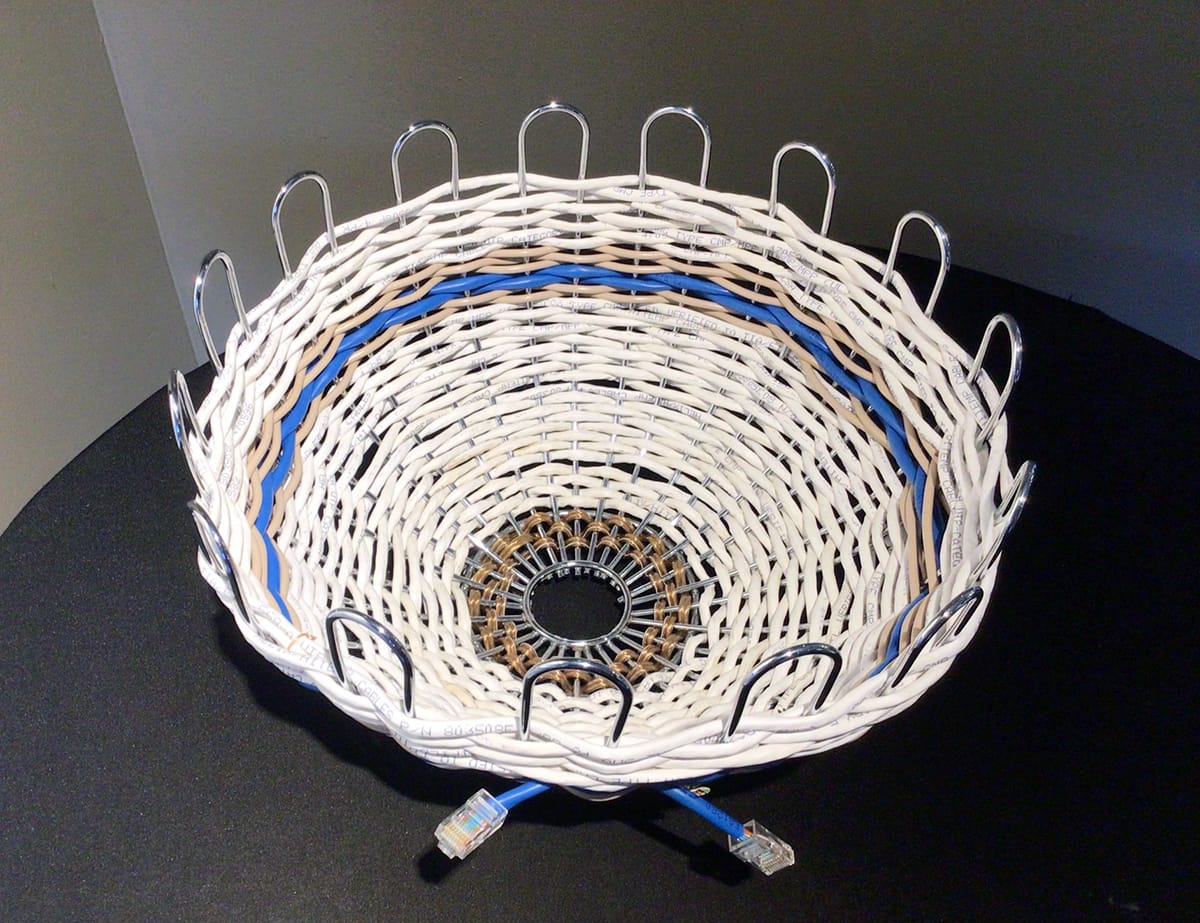
Lisa LaRue-Baker, “Crossed Wires,” 2024, recycled wiring and connectors, stainless wire fruit bowl. Photos courtesy of the artist.
In a way, through the materials the artists use and the subjects they depict, the “Topeka Competition” emphasizes the potential for art in everyday life, whether that means seeing the “beauty of experience” in an elder’s face or repurposing electrical cords to weave a basket. The material samples that accompany the pieces create an immediacy of experience, connecting the viewer to the artworks on the level of feeling in addition to seeing, making art “real” to those who might otherwise feel distanced.
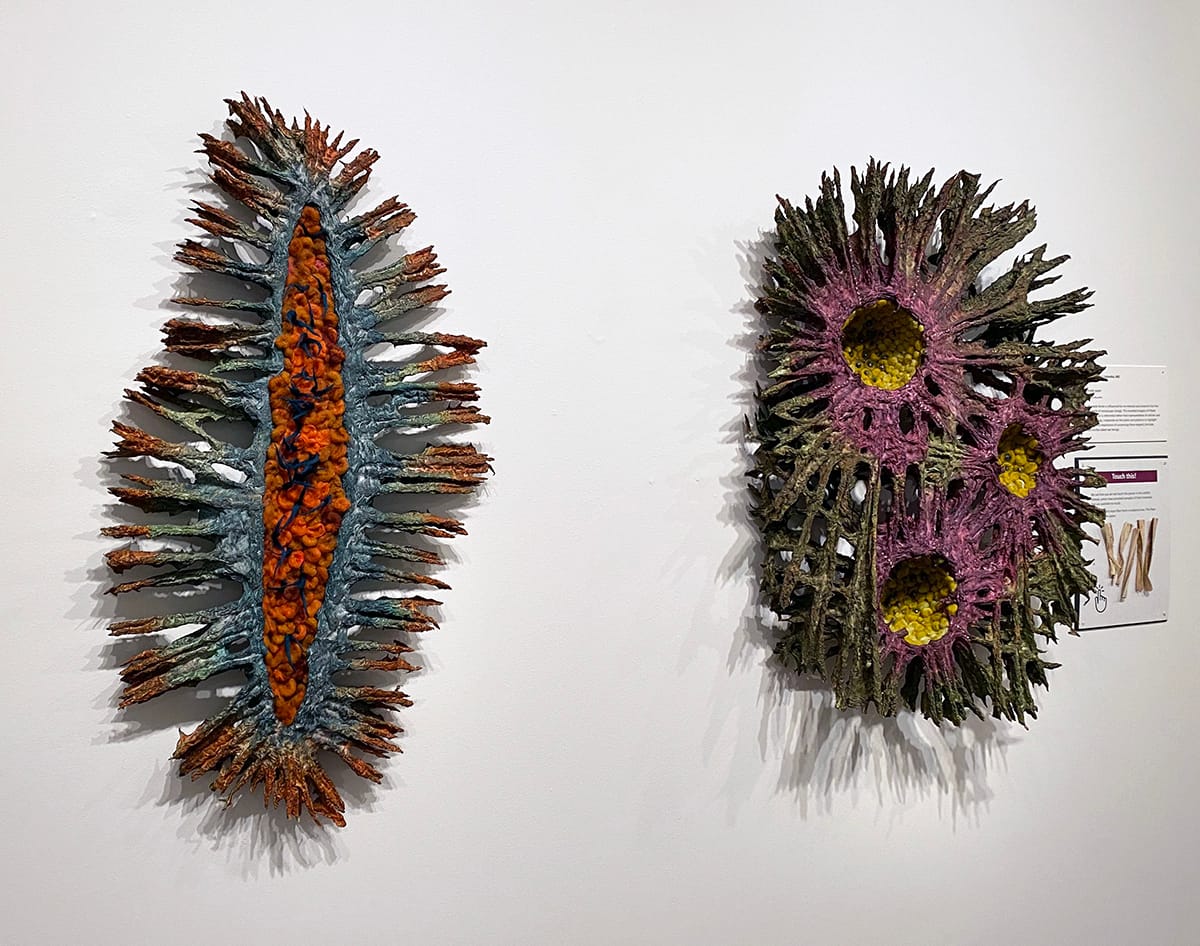
The Details
“Topeka Competition 34”
March 14-May 11, 2025, Alice C. Sabatini Gallery in the Topeka & Shawnee County Public Library, 515 S.W, 10th Ave. in Topeka, Kansas
The gallery and library are open Monday–Friday from 9 a.m.-9 p.m., Saturday from 9 a.m.-6 p.m., and Sunday from 12 p.m.-9 p.m. Admission is free.
Sabatini Gallery staff will announce purchase awards during a closing reception on May 9 from 5-6 p.m. The selected works will become part of the library’s art collection.
Learn more about "Topeka Competition 34."
Abby Bayani-Heitzman is a Filipino American writer born and raised in Northeast Kansas, where she continues to live and work. She received her Master of Arts in English from Wichita State and participated in the second cohort of the Kansas Arts Commission’s Critical Writing Initiative. Since 2021, she has published the fanzine Played Out, which focuses on music and subculture in Kansas.
⊛ Off-Broadway, a Kansas playwright meditates on the labor that defines us
⊛ Wayne Gottstine is 'back in the fight'
⊛ Star of MTW's 'Gypsy' finds purpose both on stage and from behind a pulpit
⊛ 'You don't have to give up': Clark Britton on making art into his 90s
⊛ Bygone Friends University museum housed curious collections
The latest from the SHOUT
 The SHOUTSeth Bate
The SHOUTSeth Bate
 The SHOUTKevin Kinder
The SHOUTKevin Kinder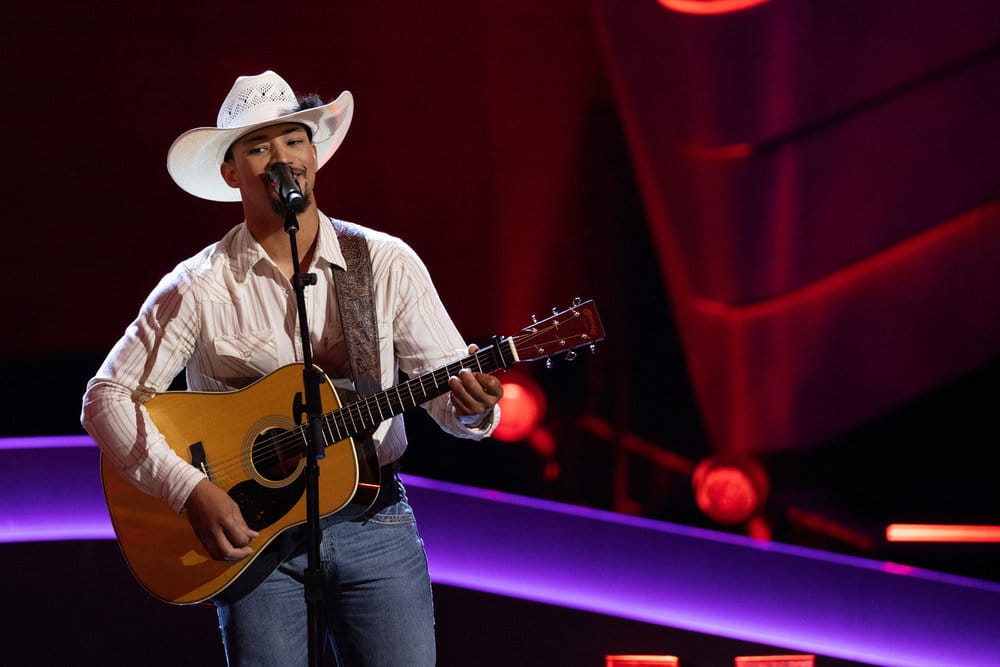
 The SHOUTEmily Christensen
The SHOUTEmily Christensen
 The SHOUTBrett Crandall
The SHOUTBrett Crandall